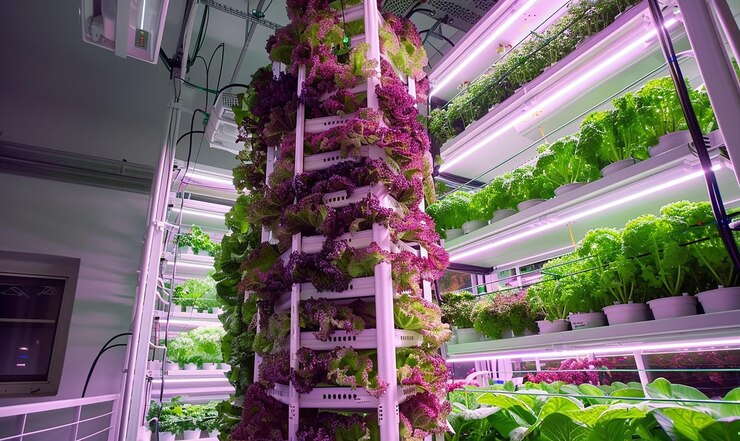The world of gardening is continually evolving, with innovations pushing the boundaries of what’s possible. Among these, the aeroponic tower garden stands out as a true game-changer, offering a highly efficient and sustainable method for growing plants. Far beyond traditional soil-based cultivation, these vertical systems are redefining how we approach food production, both for the home gardener and on a larger, commercial scale. This article delves into the intricacies of aeroponic towers, highlighting their numerous advantages and exploring their diverse applications.
Understanding the Aeroponic Revolution
Aeroponics is a cutting-edge form of hydroponics, a broader category of soil-less growing. While many are familiar with the concept of a hydroponic tower garden where plants grow in nutrient-rich water, aeroponics takes this a step further. In an aeroponic system, plant roots are suspended in the air within a contained environment and periodically misted or dripped with a fine nutrient solution. This unique method allows for unparalleled access to oxygen for the roots, a critical factor in rapid and robust plant growth.
Historically, gardening has been synonymous with soil, a practice dating back to the dawn of agriculture. However, the pursuit of efficiency and resilience has led to the development of alternative methods. Hydroponics, with its ancient roots in the Floating Gardens of the Aztecs, paved the way for modern soil-less cultivation. Aeroponics, a more recent innovation from the early 20th century, has truly blossomed with advancements in technology and materials. Early scientific explorations by botanists like V.M. Artsikhovski and Fritz Warmolt Went laid the groundwork, demonstrating the efficacy of air-based nutrient absorption. Later, pioneers like Richard J. Stoner commercialized these principles, creating the closed-loop systems that form the basis of today’s sophisticated aeroponic towers.
The Unrivaled Benefits of Aeroponic Towers
The advantages of adopting an aeroponic tower garden are numerous and compelling, addressing many of the limitations associated with traditional gardening.
- Accelerated Growth Rates: Plants in an aeroponic tower can grow significantly faster – often up to three times quicker than those in soil. This is attributed to superior oxygenation of the roots and direct nutrient delivery.
- Exceptional Water Efficiency: Aeroponic systems operate on a closed-loop principle, recycling nutrient-rich water. This drastically reduces water consumption, often by as much as 95% compared to conventional farming, making them ideal for water-scarce regions.
- Maximized Space Utilization: The vertical design of these towers allows for a high density of plants in a minimal footprint. In less than a square meter, an aeroponic tower can host dozens of plants, making it perfect for urban environments, balconies, or indoor cultivation.
- Pest and Disease Reduction: By eliminating soil, aeroponic systems inherently reduce the risk of soil-borne pests and diseases, leading to healthier plants and less reliance on chemical treatments.
How an Aeroponic Tower Garden Functions
An aeroponic tower garden is a marvel of engineering, designed for optimal plant growth. At its core, it consists of a reservoir at the base that holds the nutrient solution. A submersible pump, often quiet and energy-efficient, pushes this solution upwards through a central column to the top of the tower. From there, gravity takes over, allowing the solution to cascade downwards, dripping or misting over the suspended plant roots housed in individual growing pods along the tower’s vertical structure. The excess solution is collected back in the reservoir, ready for recirculation.
Key components work in harmony to maintain optimal conditions:
- Reservoir: The foundation of the system, storing and recirculating the nutrient-rich water. Its size should align with the scale of your garden.
- Water Pump: Essential for delivering the nutrient solution to the top of the tower, ensuring continuous hydration and nourishment of the roots.
- Grow Lights: For indoor setups, high-efficiency LED grow lights are crucial. Their vertical arrangement ensures even light distribution across all levels of the tower, promoting consistent growth.
- Timers: These automation tools are invaluable, allowing for precise control over watering and lighting schedules. This “set it and forget it” functionality streamlines maintenance and optimizes growth cycles.
Maintaining these systems involves regularly checking pH levels (ideally between 5.5 and 6.5) and nutrient concentrations to ensure plants receive the proper sustenance. Consistent watering intervals, adjusted for environmental factors like temperature and humidity, are also vital for robust growth.
Ideal Plants for Your Aeroponic Tower
The versatility of the aeroponic tower garden allows for a wide array of crops to flourish. Leafy greens like lettuce, kale, spinach, and mustard greens are exceptionally well-suited due to their rapid growth and high yield. Herbs such as basil, parsley, mint, and cilantro also thrive in these systems, producing fragrant and flavorful harvests. While some vining plants like tomatoes and cucumbers can be grown, they typically require additional support such as trellises. The efficiency of these towers means more nutrient-dense, homegrown produce for you and your family.
Diverse Applications of Aeroponic Technology
Beyond personal home gardening, aeroponic technology is finding applications in various sectors, demonstrating its broad potential.
- Residential Growing: For urban dwellers or those with limited outdoor space, an aeroponic tower garden offers a practical solution to grow fresh, chemical-free produce year-round. It significantly reduces the carbon footprint associated with store-bought produce.
- Arid Regions: In areas facing severe water scarcity and extreme temperatures, indoor aeroponic farming presents a highly sustainable and productive alternative to traditional agriculture. The unparalleled water efficiency is a critical advantage.
- Space Exploration: NASA has extensively researched aeroponics for cultivating food in space environments. The system’s ability to operate without soil, its compact nature, and its water recycling capabilities make it ideal for long-duration space missions and future extraterrestrial colonies. Experiments have even shown plants growing faster in space using aeroponics.
- Commercial Farming: Larger-scale aeroponic installations are emerging as viable solutions for commercial food production, offering higher yields, faster crop cycles, and reduced resource consumption compared to conventional farming.
Conclusion
The aeroponic tower garden represents a significant leap forward in sustainable agriculture. Its ability to facilitate rapid growth, conserve water, maximize space, and reduce reliance on harmful chemicals makes it an incredibly appealing option for both personal and commercial cultivation. As we look towards a future requiring more efficient and resilient food systems, the principles embodied in the aeroponic tower, including its close relation to the hydroponic tower garden, will undoubtedly play a pivotal role. With ALTO Garden, the future of fresh, homegrown produce is literally looking up.





